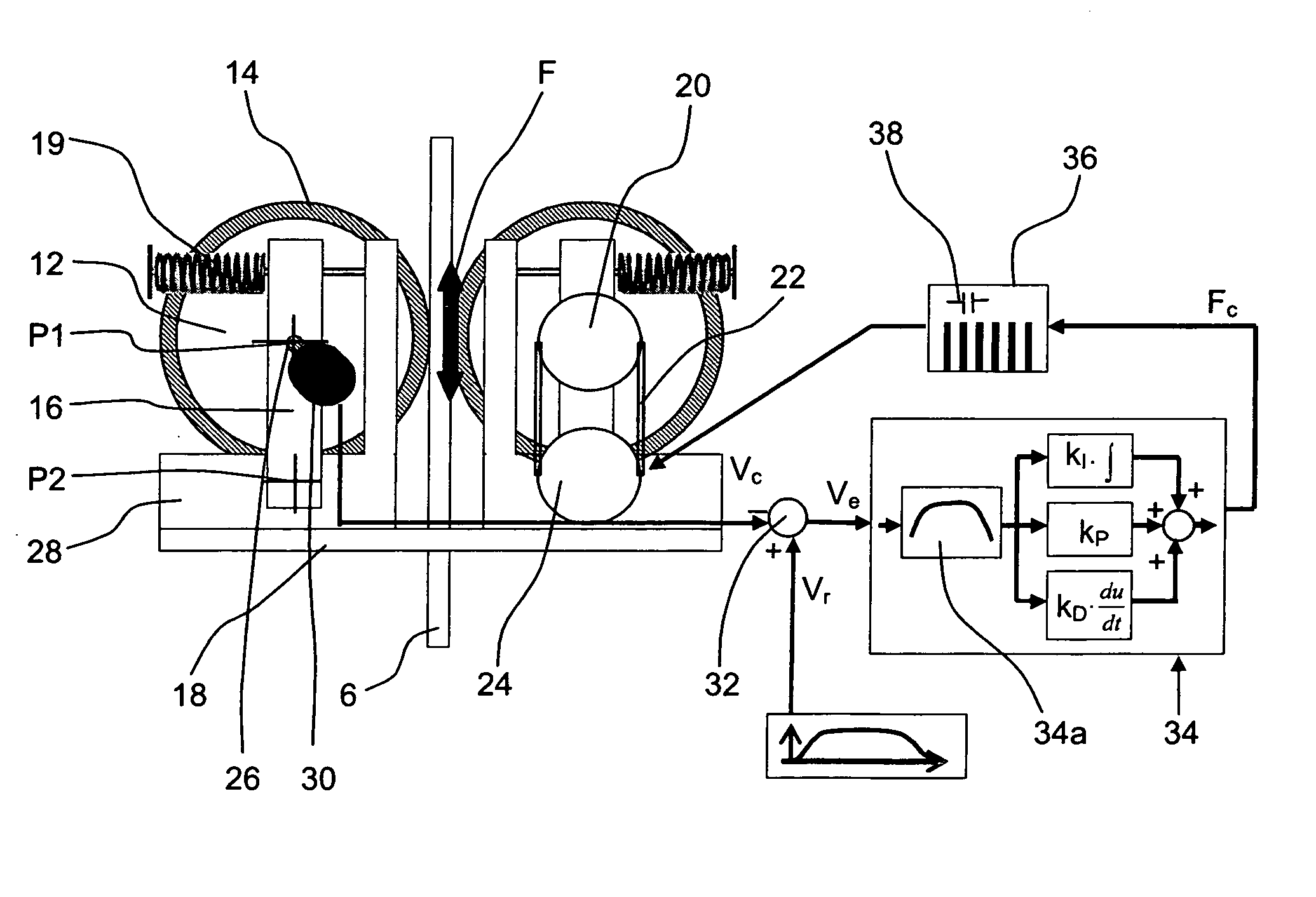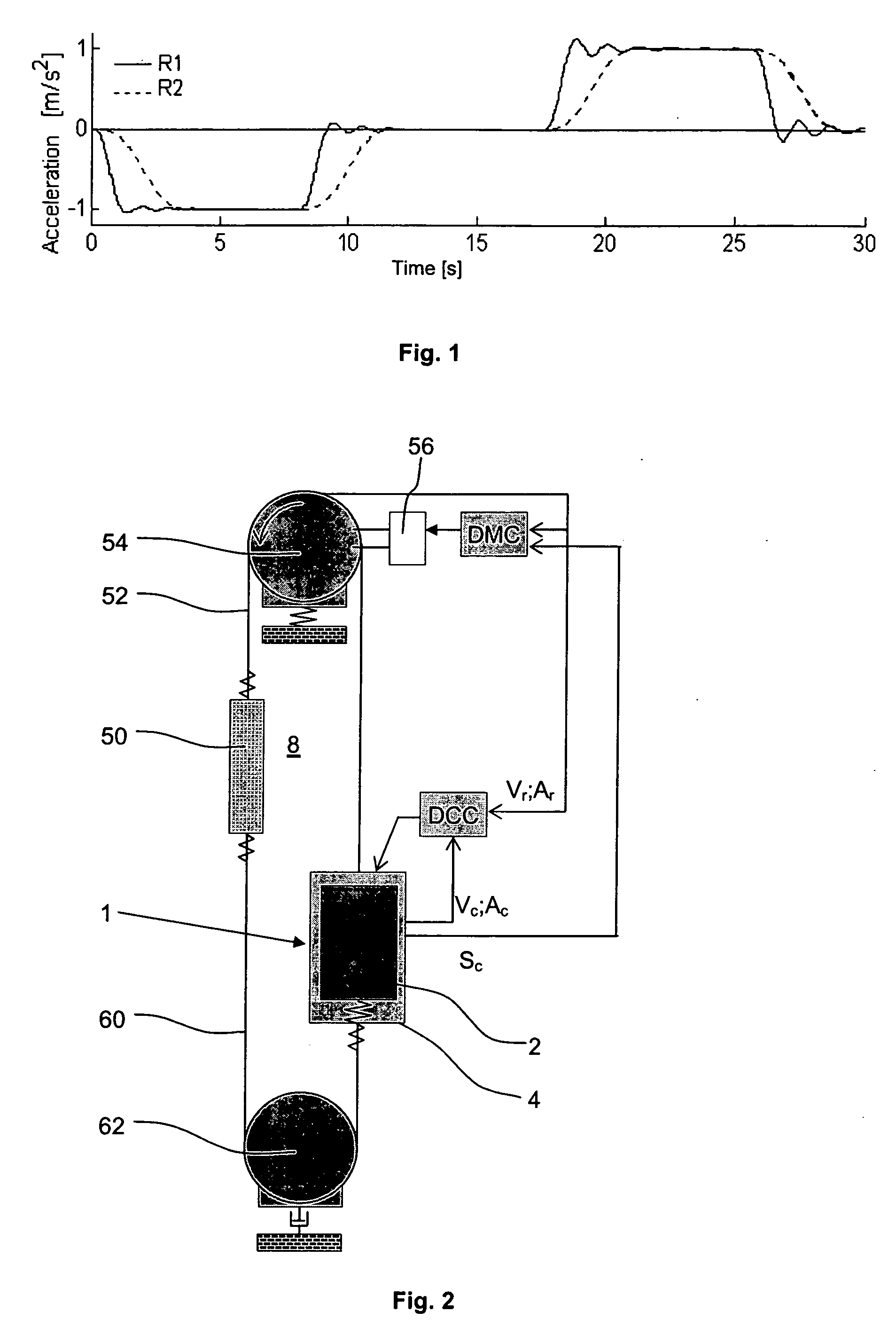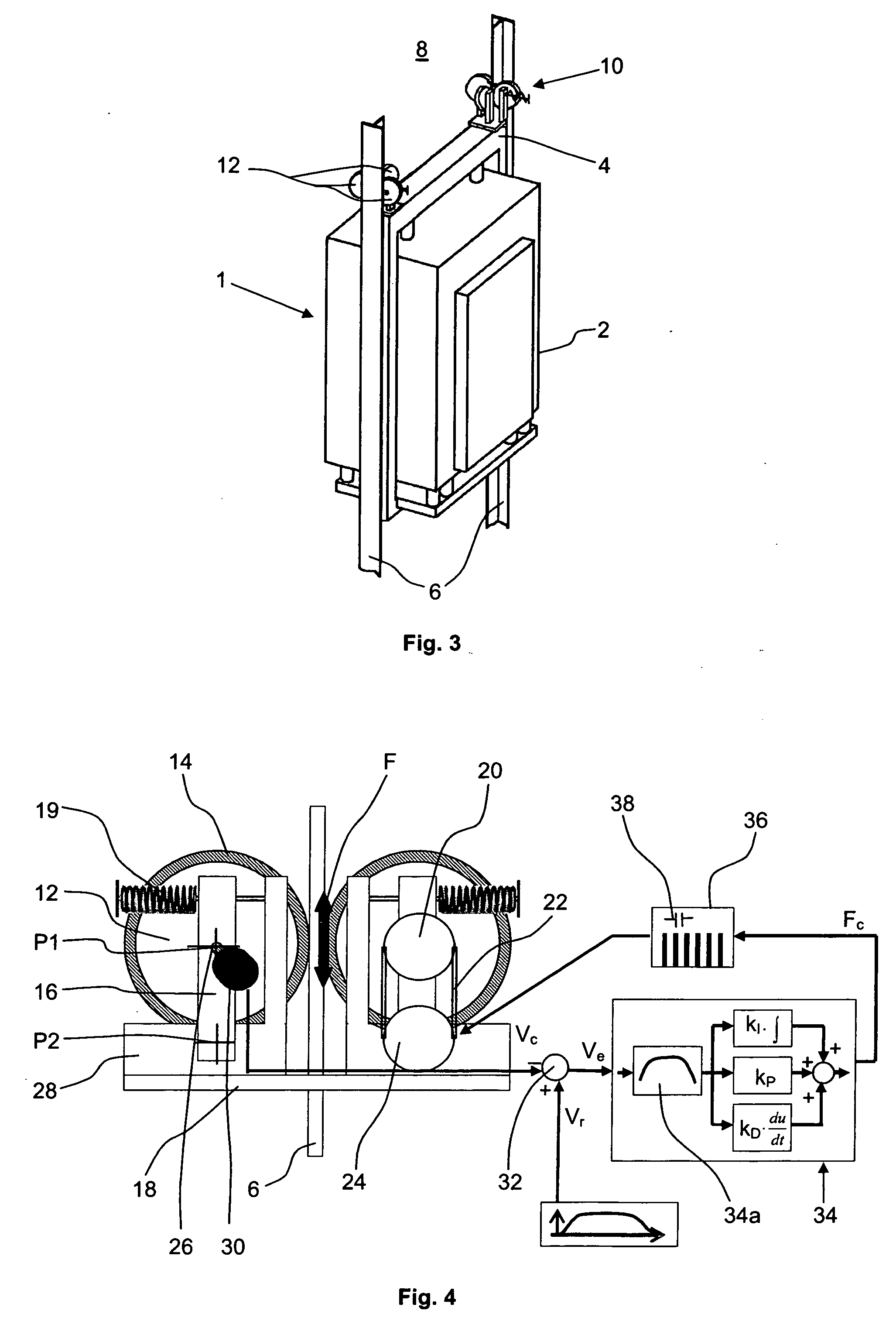Elevator with vertical vibration compensation
a technology of vertical vibration compensation and elevator, which is applied in the field of elevators, can solve the problems of low frequency deterioration of perceived ride quality, and undermining passenger confidence, and achieve the effect of reducing vertical vibration of elevator cars
- Summary
- Abstract
- Description
- Claims
- Application Information
AI Technical Summary
Benefits of technology
Problems solved by technology
Method used
Image
Examples
Embodiment Construction
[0029] To avoid unnecessary repetition within the description, features that are common to more than one embodiment have been designated with the same reference numerals.
[0030]FIG. 2 illustrates an elevator according to the present invention. The elevator includes an elevator car 1 which is arranged to travel upwards and downwards within a hoistway 8 of a building. The elevator car 1 comprises a passenger cabin 2 supported in a frame 4. A traction rope 52 interconnects the car 1 with a counterweight 50 and this rope 52 is driven by a traction sheave 54 located above or in an upper region of the hoistway 8. The traction sheave 54 is mechanically coupled to a main motor 56 which is controlled by an elevator controller DMC. The traction rope 52, the traction sheave 54, the motor 56 and the elevator controller DMC constitute the main drive used to support and propel the car 1 though the hoistway 8. In high-rise elevators the weight of the traction rope 52 is significant and a compensat...
PUM
 Login to View More
Login to View More Abstract
Description
Claims
Application Information
 Login to View More
Login to View More - R&D
- Intellectual Property
- Life Sciences
- Materials
- Tech Scout
- Unparalleled Data Quality
- Higher Quality Content
- 60% Fewer Hallucinations
Browse by: Latest US Patents, China's latest patents, Technical Efficacy Thesaurus, Application Domain, Technology Topic, Popular Technical Reports.
© 2025 PatSnap. All rights reserved.Legal|Privacy policy|Modern Slavery Act Transparency Statement|Sitemap|About US| Contact US: help@patsnap.com



